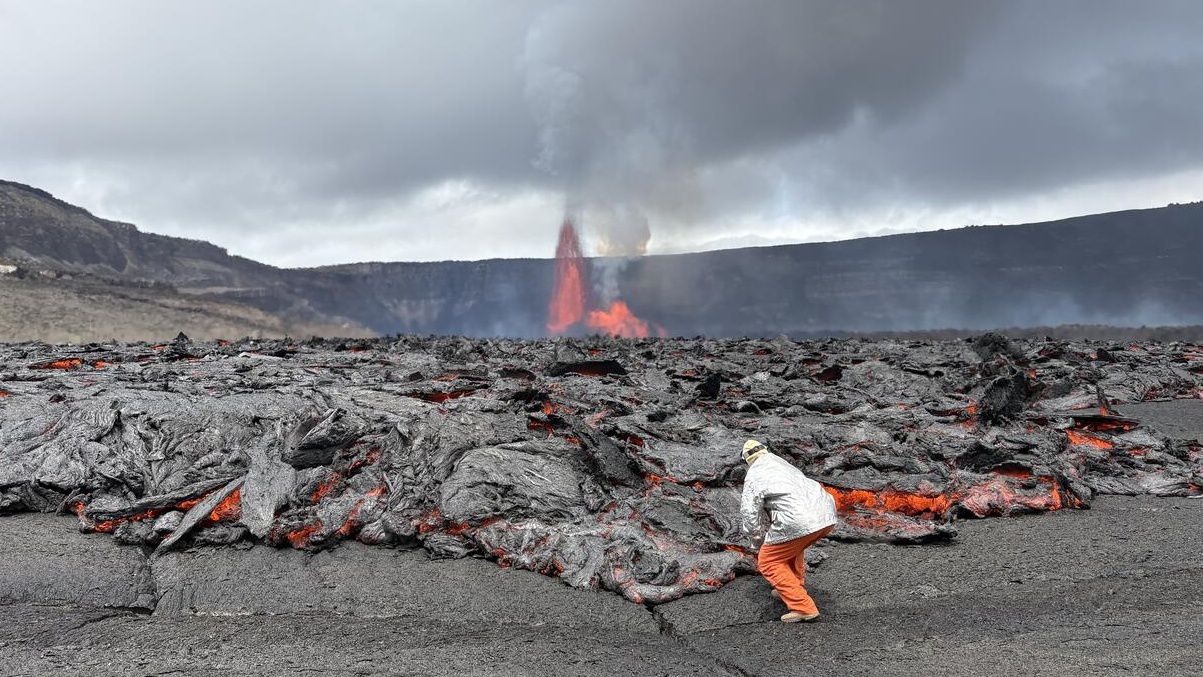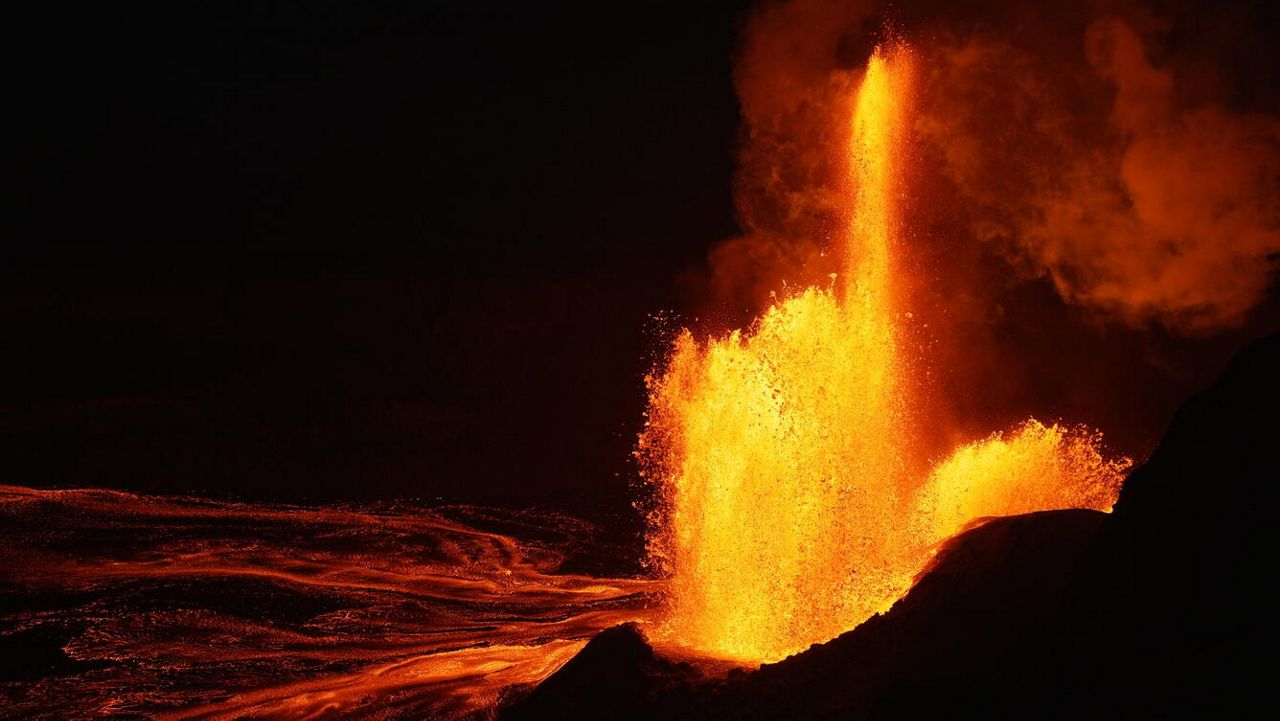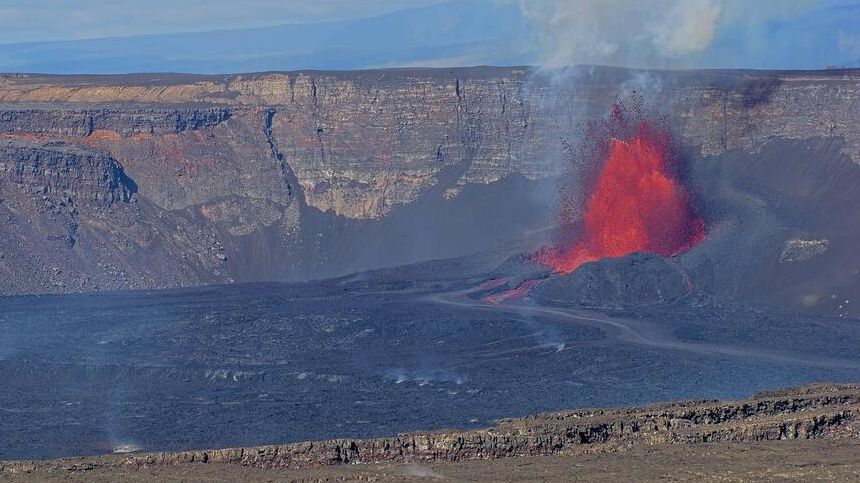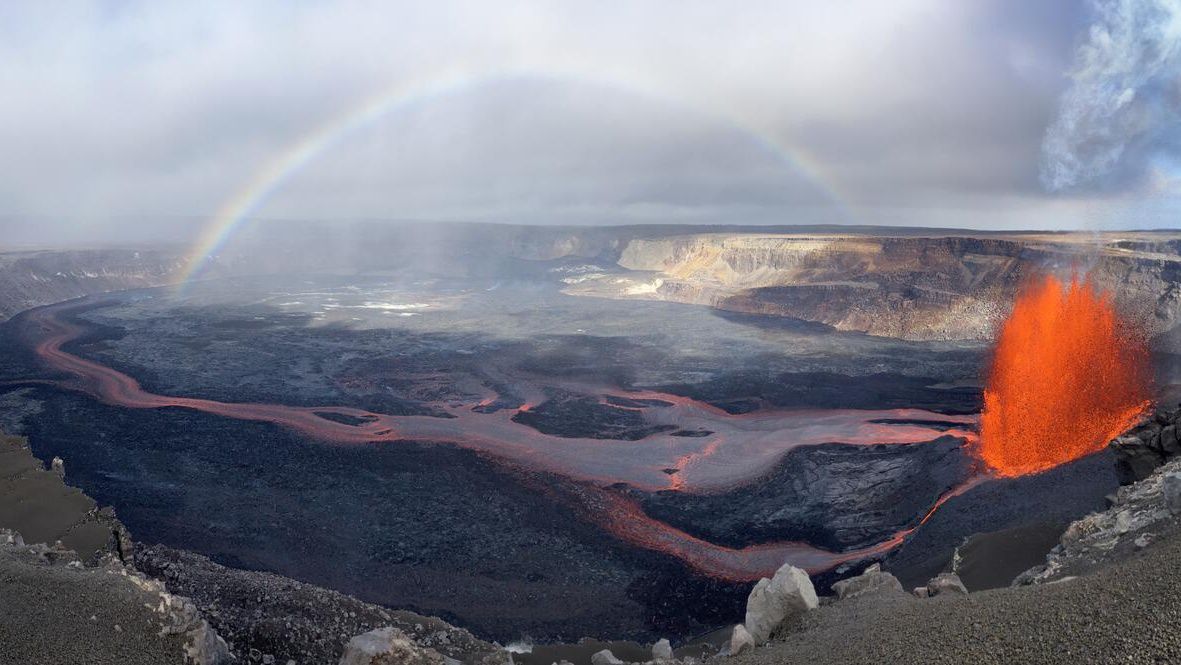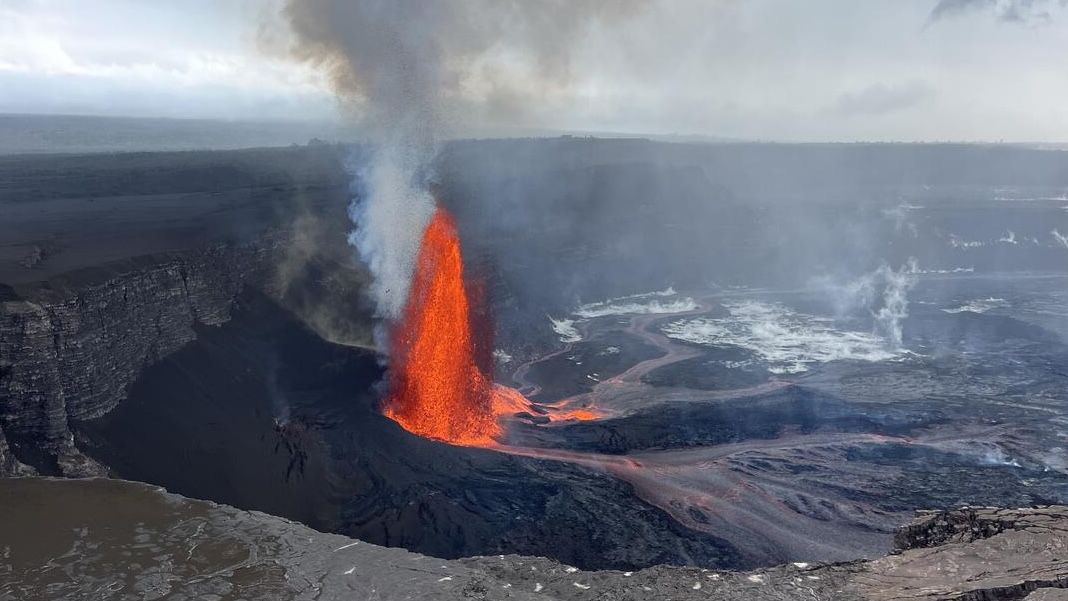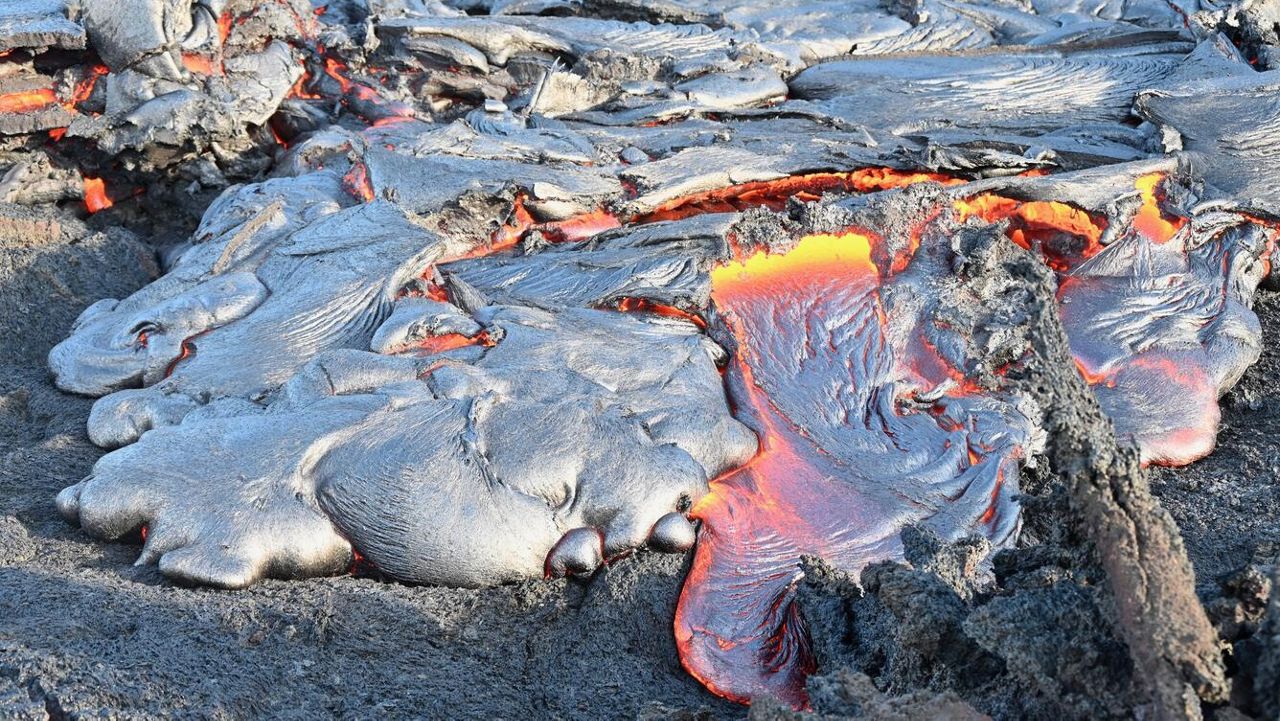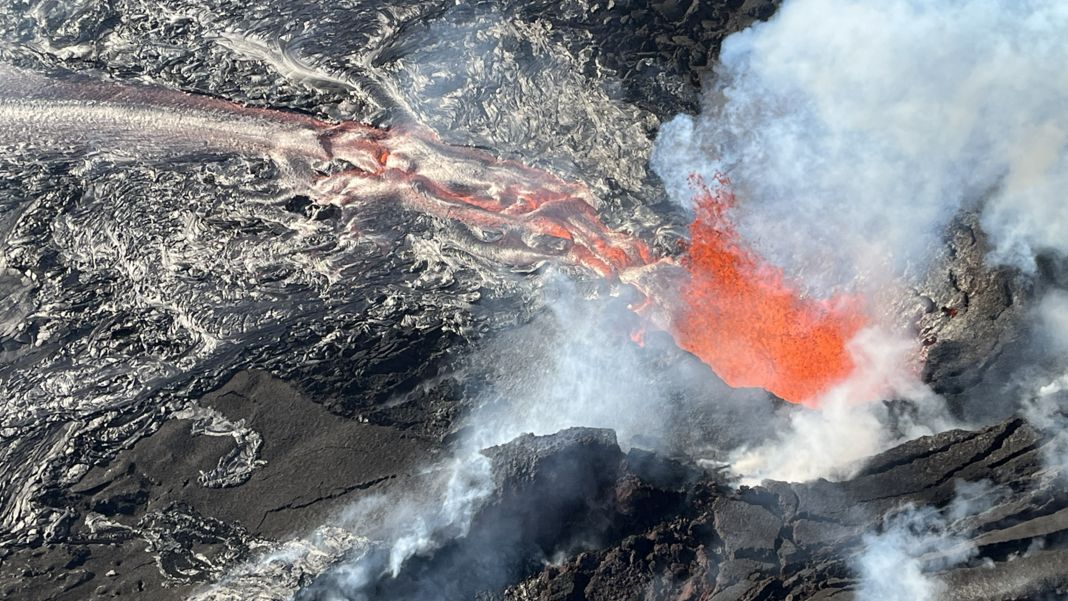The Hawaiian Volcano Observatory reported Kilauea volcano began the main fountaining event of episode 19 on Thursday at 9:28 p.m. The fountaining ended the following morning at 5:20 a.m., after erupting from the north vent for just under 8 hours.
The current eruption, which began on Dec. 23, 2024, has already produced 18 episodes of lava fountaining, each separated by brief pauses in activity. These spectacular bursts of lava originate from two vents within the Halemaʻumaʻu crater: the north vent and the south vent.
Before episode 19 started, Kilauea produced over 9 hours of cycles of low dome fountaining and short overflows from the north vent, which were immediately followed by lava draining back into the vent. Sustained fountaining started from the north vent at 9:28 p.m., peaking at heights around 330 feet. The eruption produced almost 4 million cubic yards of lava, and the flows covered about half of the Halemaʻumaʻu crater floor.
The Hawaiian Volcano Observatory warns that emissions of volcanic gas — a mix of water vapor, carbon dioxide, and sulfur dioxide — are elevated. As sulfur dioxide is released from the eruption, it will react in the atmosphere to create the visible haze known as vog.
Also, HVO noted visitors to Hawaii Volcanoes National Park and residents of nearby areas should watch out for Pele’s hair and other small fragments of volcanic glass and tephra carried in the plume, as they were during previous episodes.


